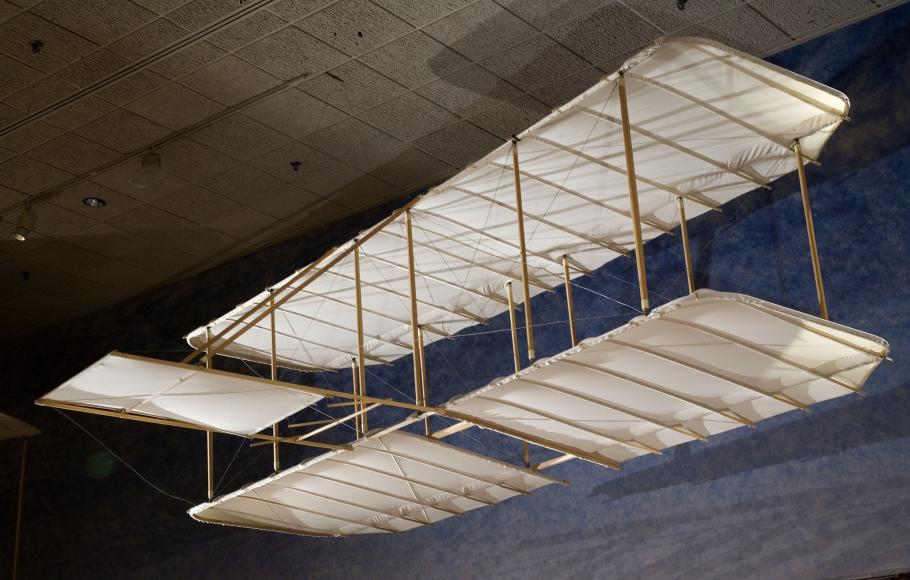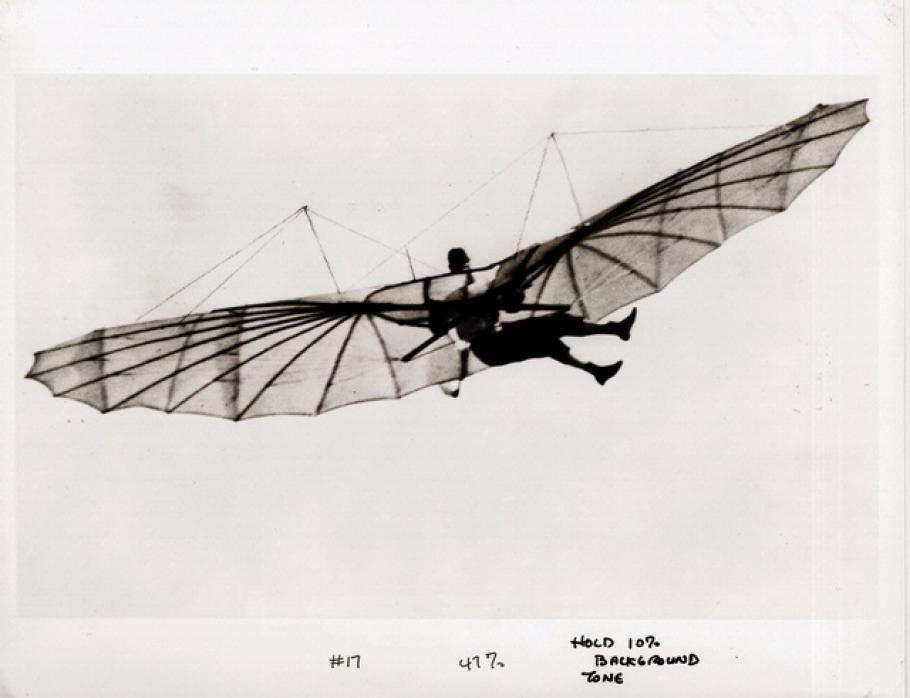Airplane designers will tell you that the wing is the heart of an airplane. For conventional airplanes, it provides most of the lift generated by the airplane; the fuselage and tail contribute only a few percent of the overall lift of the airplane.
The Wright brothers recognized this from the very start of their work on flying machines. The wings of their first gliders in 1900 and 1901 were designed on the basis of the aeronautical data reported by the German aeronautical pioneer, Otto Lilienthal. When, however, they measured the aerodynamic lift on their gliders, they found that the measured lift was only one-third of their calculated lift based on Lilienthal’s data. (We know today that the problem was not with Lilienthal’s data, but rather with the Wright’s misinterpretation of his data, based on lack of information about the wing geometry of Lilienthal’s test model.) Nevertheless, the Wright’s proceeded to carry out their own tests, using a rudimentary wind tunnel of their own design. They learned from their wind tunnel tests the important effect of wing aspect ratio on the lift and drag. (For their rectangular wings, the aspect ratio is equal to the wing span divided by the chord. A large aspect ratio wing is like a slat from a Venetian blind; a low aspect ratio wing is short and stubby.) Their 1900 and 1901 gliders had low aspect ratio wings, aspect ratios of 3.4 and 3.3 respectively. (Lilienthal’s model aspect ratio was 6.48, and is the main reason why the measured lift of the 1900 and 1901 gliders did not agree with the Wrights’ calculations based on the Lilienthal’s data.)From their wind tunnel data, the Wrights found that a high aspect wing produced more lift and less drag than a low aspect ratio wing. The aspect ratio for their next glider in 1902 was 6.7, and this glider flew beautifully. The Wright Flyer had an aspect ratio of 6.4. We note that many conventional airplanes today have very similar aspect ratios.
The wings of the Wright’s flying machines had another important feature. The wing tips could be warped in opposite directions, setting up an unbalanced lift force on the two wings, and hence providing a control mechanism to roll the airplane. The Wrights pioneered the concept of lateral (roll) control – one of their most important technical contributions to the airplane. After a few years, ailerons were employed for roll control in lieu of wing warping, but the Wrights’ contribution was seminal. The cross-section of a wing taken in the flight direction is called an airfoil. The shape of an airfoil is an important design feature of a wing. For example, it affects the lift and drag of the wing, and has a major effect on the stalling angle of attack (the angle of attack of the wing beyond which the lift dramatically drops off and the drag suddenly increases).The airfoils used by the Wrights were very thin because their wind tunnel test indicated that very thin shapes resulted in lower drag than thick airfoils. Most airplanes through World War I followed suit and used thin airfoils. The early wind tunnel results were misleading, however, because the wind tunnel models were small and the airflow speeds of the air in the wind tunnels were low. We know today that the much larger size and airspeeds associated with full scale flight resulted in the opposite effect. Thin airfoils experienced “thin airfoil stall” at angles of attack much lower than normal stalling angles of attack. This was due to the separation of the flow over the top surface of the thin airfoil, hence creating much higher drag and a loss of lift. In contrast, under the same operating conditions, thicker airfoils did not encounter flow separation until much higher angles of attack, hence producing more lift and less drag at higher angles of attack. This was discovered by German engineers, and thick airfoils were employed on the Fokker Triplane and the Fokker D-7 toward the end of World War I. These airplanes were able to climb faster and maneuver more sharply than airplanes using thin airfoils, and resulted in the Fokker D-7 being one of the most effective fighters of the War.
In the 1920s airplane designers moved towards the use of thick airfoils. By the 1930s, efficient wing designs exhibited large aspect ratios and thick airfoils. The famous Douglas DC-3 is an excellent example, with its aesthetically beautiful high wing aspect ratio of 9.14 and streamlined 15 percent thick airfoil. Thick airfoils had structural as well as aerodynamic advantages. A thicker wing allowed storage space for fuel tanks and retractable landing gear. A thicker wing also allowed a larger and stronger structural spar along the inside of the wing, which in turn allowed the wing to be cantilevered from the fuselage without any external support wires and struts. This helped to encourage the use of the modern single wing (monoplane) instead of the older two-wing (biplane) configuration. With the advent of jet airplanes in the 1950s pushing speeds close to and beyond the speed of sound, airfoil and wing shapes made another dramatic change. Thinner airfoils allowed subsonic airplanes to fly closer to the speed of sound before encountering adverse shock waves over the wing, shock waves which greatly increased the drag and reduced the lift. For supersonic airplanes, the driving design feature was to reduce the strength of shock waves on the wings, and hence to reduce the supersonic wave drag. The thinner the airfoils, the weaker the shocks, and the lower the wave drag. The Lockheed F-104, the first airplane to be designed for sustained speeds at Mach 2, is a perfect example. The airfoil shape on the F-104 is very thin, about 3.5 percent thick, and the leading edge is razor thin, all to reduce the strength of the shock waves from the leading edge of the wing. At the National Air and Space Museum in Washington, DC, you can get within a few feet of the F-104 wing, and see the dramatically thin airfoil. It is almost like making a full circle in airfoil thickness, returning to that of the Wright brothers, but for completely different flight conditions. Also, many high speed subsonic and supersonic airplanes have swept wings rather than straight wings, also to reduce the strength of shock waves and to obtain a lower wave drag. See if you can find the best lift-to-drag ratio for the F-104 airfoil, and learn more about how wings work, in this fun online activity.
Wing and airfoil shapes are still evolving today, driven by new and challenging flight conditions. The drive for more and more fuel economy in flight is driving new and better wing configurations and airfoil shapes to obtain higher lift-to-drag ratios. Also, future hypersonic flight vehicles flying at Mach 5 and higher will require innovative new wing and airfoil shapes. So the evolution marches on.


